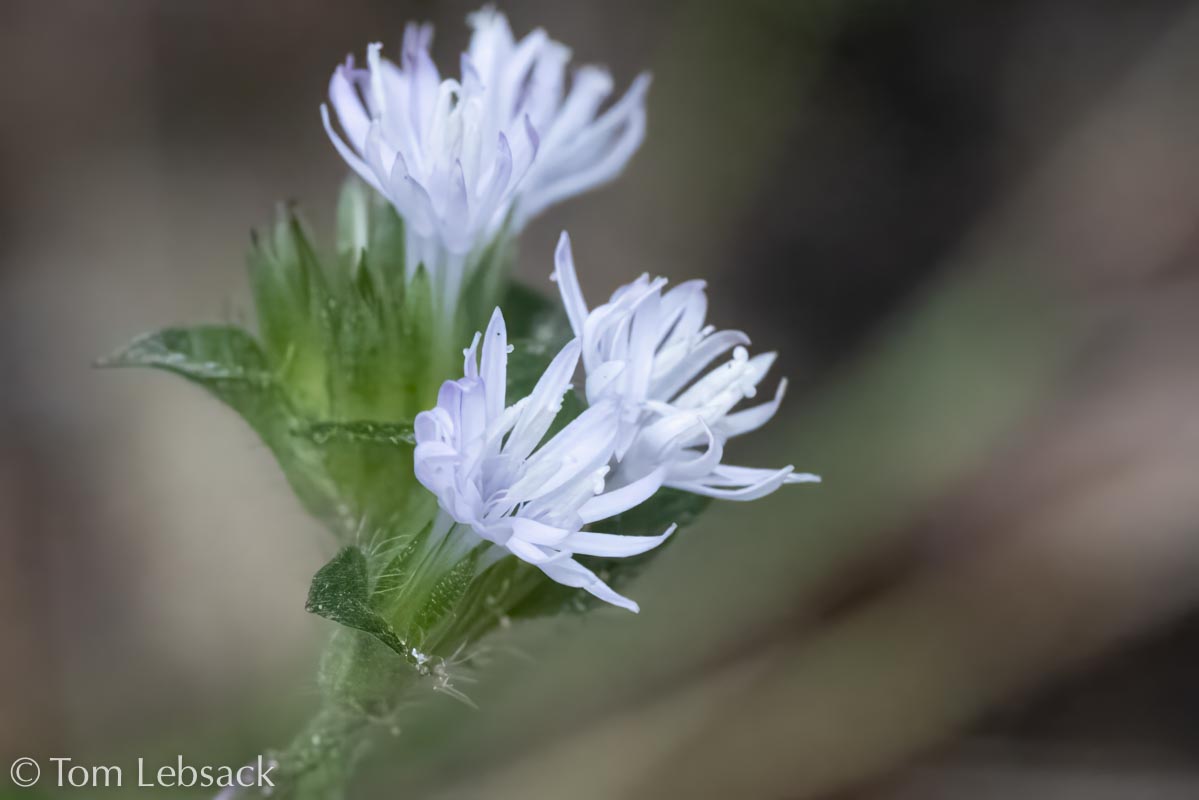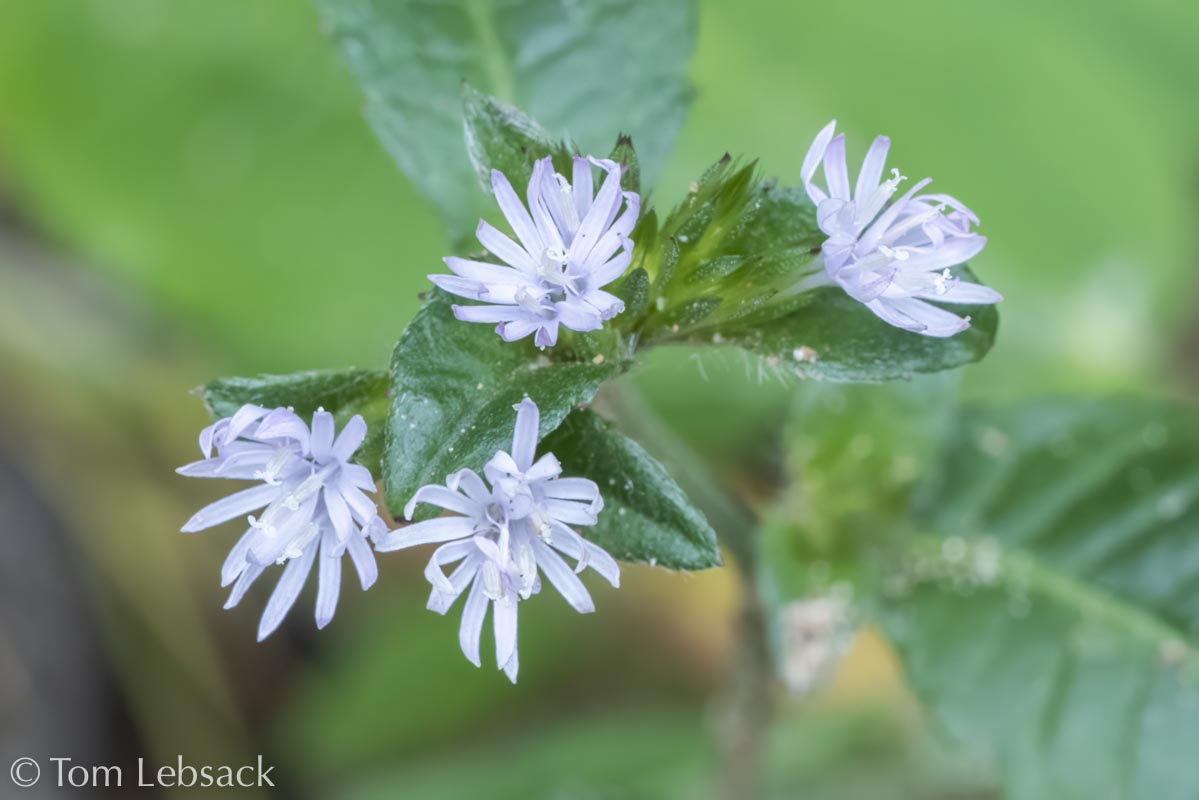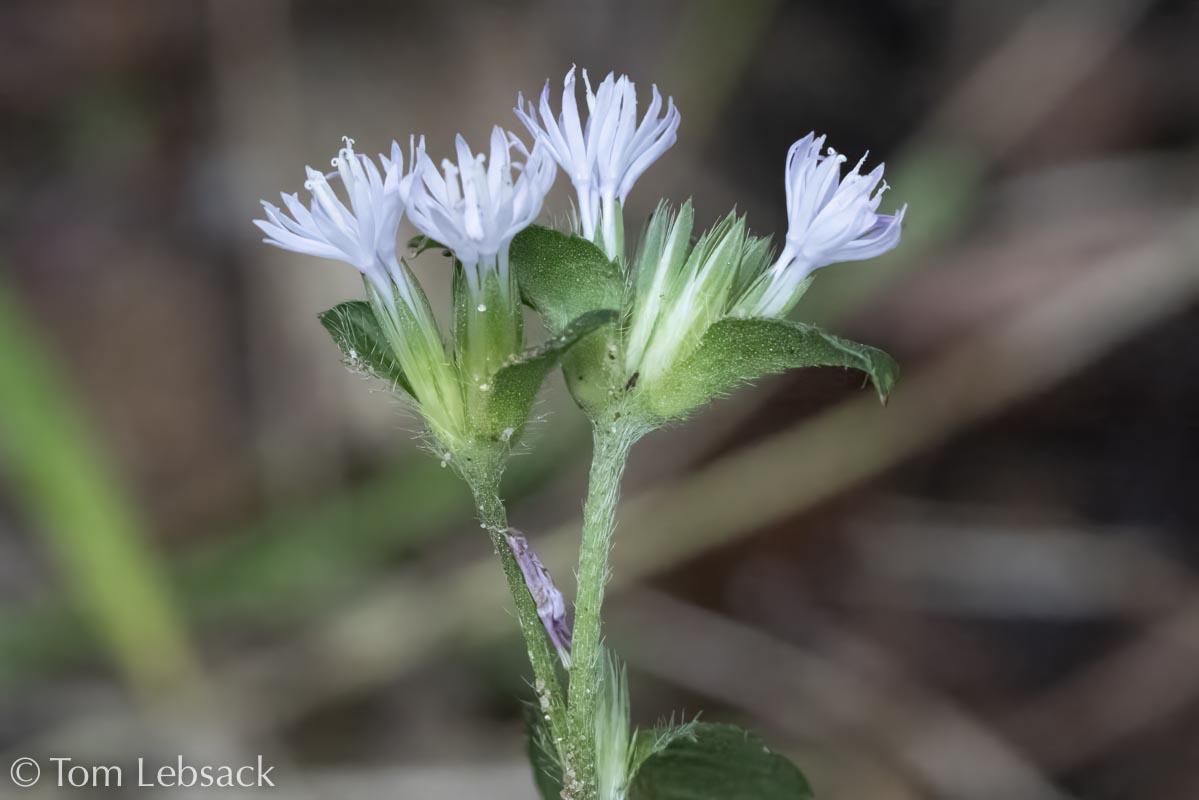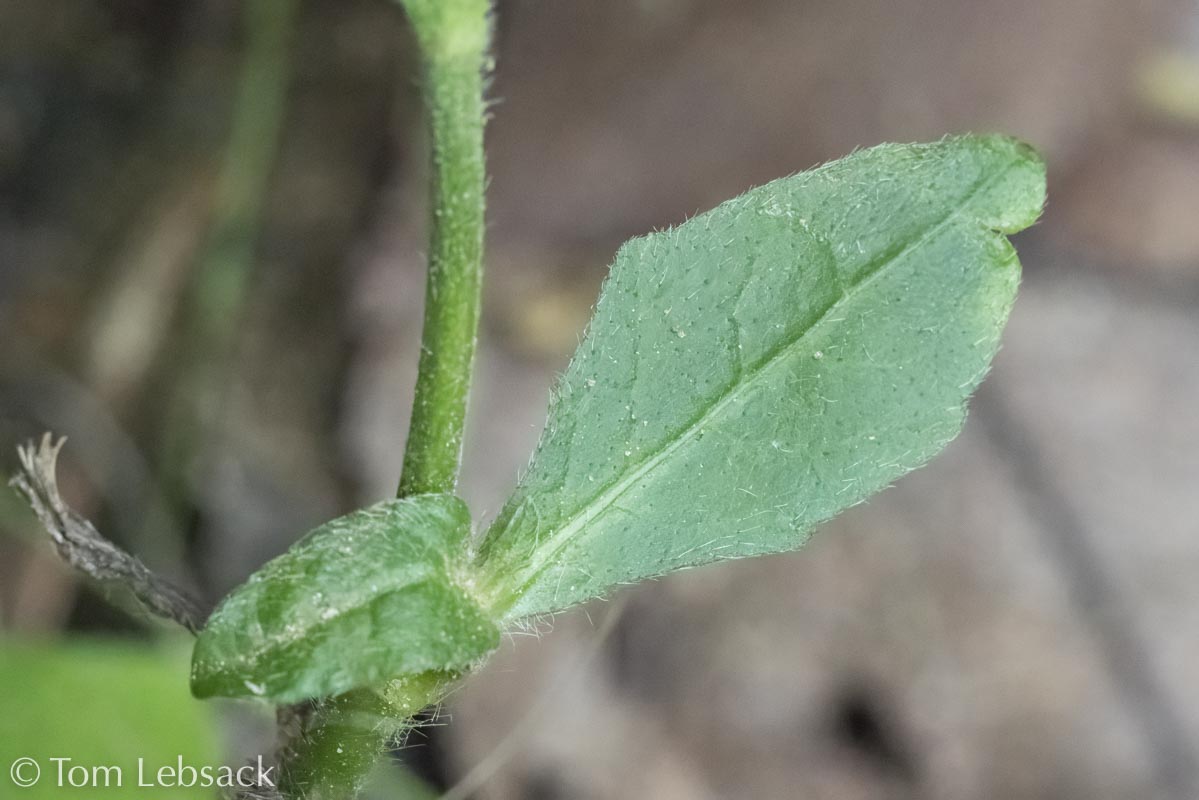Texas Wildbuds
Elephantopus carolinianus
(Carolina Elephant’s-foot)
| Scientific Name | Elephantopus carolinianus | USDA PLANTS Symbol | ELCA3 |
| Common Name | Carolina Elephant's-foot, Leafy Elephant's-foot | ITIS Taxonomic Serial No. | 37297 |
| Family | Asteraceae (Sunflower) | SEINet Reference |
Click Here |
| Description | Habitat: Usually sandy soils in damp to wet areas in pine and mixed forests and along streambanks, roadsides, and in pastures. Plant: Leafy perennial with erect or ascending stems, 1 or occasionally 2 to several, usually branched above; 12 to 40 inches tall. Leaves: Alternate with blades that are ovate to lanceolate or broadly elliptic, 0.8 to 6 inches long and 1.2 to 3.6 inches wide, gradually smaller upward; sessile, and margins are dentate to crenate; surfaces sparsely hairy; basal leaves often absent at flowering. Inflorescence: Single or small, tight clusters of 4 or 5 light purple to white flowers, each cluster about 1-inch wide or less; flowers have only disk florets, irregularly and deeply 5-lobed that are about 0.3-inch long; clusters are supported by 1 to 3 leaf-like, heart-shaped bracts equaling or exceeding the clusters in length; involucres are cylinder-shaped, 0.3 to to 0.4 inch long; with 4 pairs of straw-colored to green phyllaries with green, pointed tips. Bloom Period: September to November. References: "Manual of the Vascular Plants of Texas" by Correll and Johnston, SEINet "Wildflowers of Texas" by Michael Eason, Kansas Wildflowers and Grasses and Wikipedia. |
BONAP Distribution Map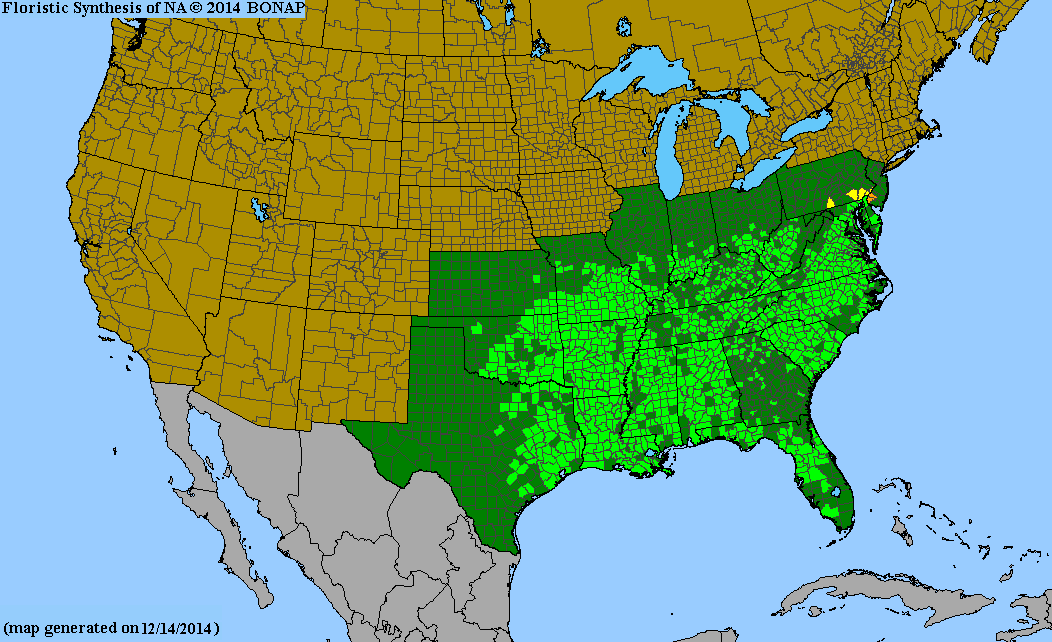 Map Color Key Map Color Key |
Texas Status: Native |
Banner photo of Castilleja indivisa and Lupinus ssp. taken along FM 1323 north of Johnson City, Blanco County
© Tom Lebsack 2025
Every attempt is made to provide accurate, up-to-date, and relevant information, but the completeness or accuracy of any information presented on this website cannot be guaranteed. I use authoritative references to insure high standards of accuracy and review and update the information frequently.
